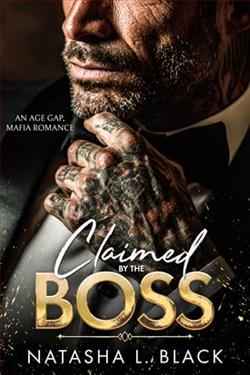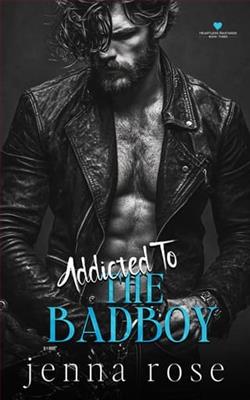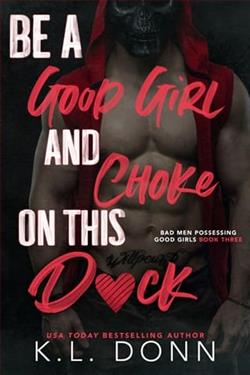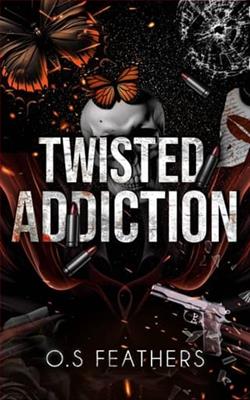Page 44 of Pucking My Grumpy Roommate
In the past, I would have been irritated. This was my meticulously clean apartment, after all. Instead, I found myself crouching down to look at what she’d been working on.
The pages nearest to her were covered in complex formulas and diagrams, with notes scribbled in the margins in Kate’s distinctive handwriting. I picked up one sheet that had a heading: “Application of Bioactive Compounds in Athletic Recovery.”
My eyebrows shot up as I scanned the content. This wasn’t just abstract scientific theory—Kate was researching ways to accelerate healing in soft tissue injuries. Like my knee.
“That’s the boring section,” came a sleepy voice.
I looked up to find Kate watching me through half-lidded eyes, a crease on her cheek from where it had pressed against a textbook.
“If boring means potentially revolutionary for sports medicine, then sure,” I replied, still holding the paper.
She sat up, rubbing her eyes, hair falling in her face. “Sorry about the mess. I was trying to organize everything for my presentation next week and must have fallen asleep.”
“Is this all your research?” I asked, genuinely curious.
Kate nodded, suddenly seeming self-conscious. “It’s my side project, actually. Not the main fellowship work. Dr. Barnes thinks it’s a waste of time, but I see potential applications.”
“For athletes?”
She tucked a strand of hair behind her ear, her eyes lighting up with that passion I’d come to recognize whenever she talked about her work.
“Not just athletes. Anyone with soft tissue injuries. But yes, the recovery time for things like ligament tears could potentially be reduced by twenty to thirty percent with the right bacterial enzyme applications.”
I sat down on the floor across from her, setting the paper down. “Explain it to me. In English.”
Kate looked surprised. “You actually want to hear about my research?”
“Would I ask if I didn’t?”
A smile spread across her face, transforming her from sleepy to radiant in an instant. “Well, basically, I’m studying how certain bacterial compounds can act as catalysts in the healing process. They stimulate the body’s own repair mechanisms, making them work more efficiently.”
I found myself nodding, following her explanation as she grew more animated.
“The traditional approach is all about rest and gradual rehabilitation,” she continued, hands moving expressively. “Which is important—don’t get me wrong—but what if we could enhance the body’s natural healing capacity?”
“Like a biological booster,” I said.
“Exactly!” Her eyes widened, as if shocked I’d made the connection. “That’s exactly it. God, I wish Dr. Barnes understood it like you just did.”
Something warm bloomed in my chest at her words. “How long until something like this could be used clinically?”
Her enthusiasm dimmed slightly. “Years, probably. Clinical trials, FDA approval—the whole process is painfully slow. But the science is promising.”
I leaned back against the couch, stretching my injured leg out carefully. “Must be frustrating, knowing you could help people but having to wait for bureaucracy.”
“Tell me about it,” she said with a sigh. “How was your appointment, by the way? Your knee seems better today.”
“It is, surprisingly. Doctor says I’m ahead of schedule.”
Kate’s face lit up. “Austin, that’s fantastic! What did they say about returning to play?”
“Still a while off,” I admitted. “But the healing is happening faster than they expected.”
She studied me for a moment, head tilted. “You don’t seem as excited as you should be.”
I shrugged, unsure how to articulate the mix of hope and fear swirling inside me. “Getting my hopes up is dangerous. I’ve seen careers end from rushing back too soon.”
“That must be terrifying,” she said quietly. “The uncertainty.”















